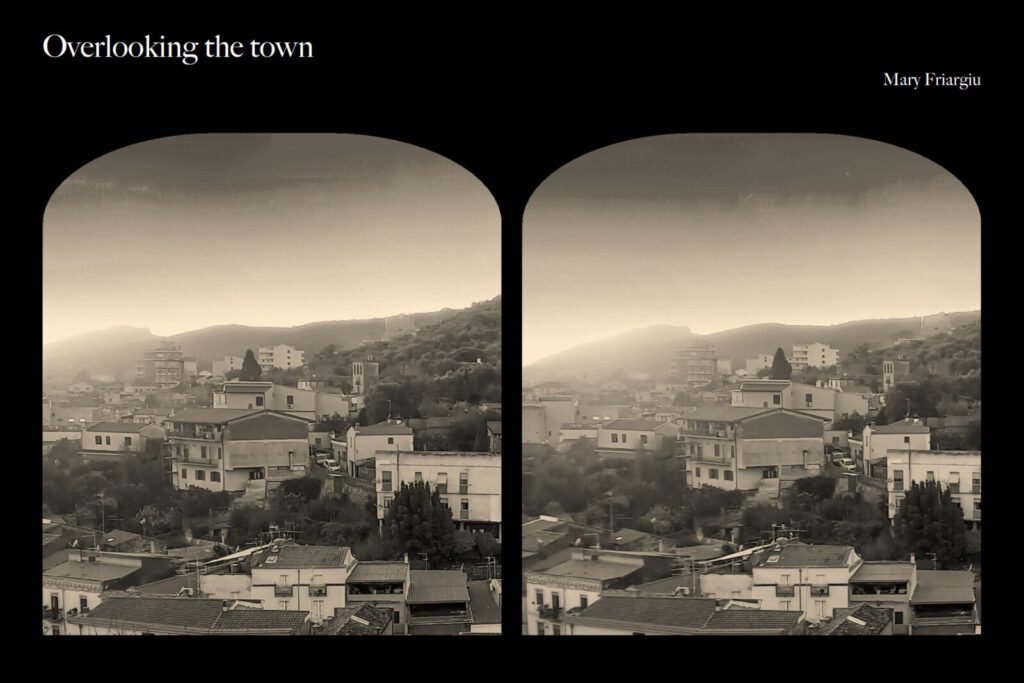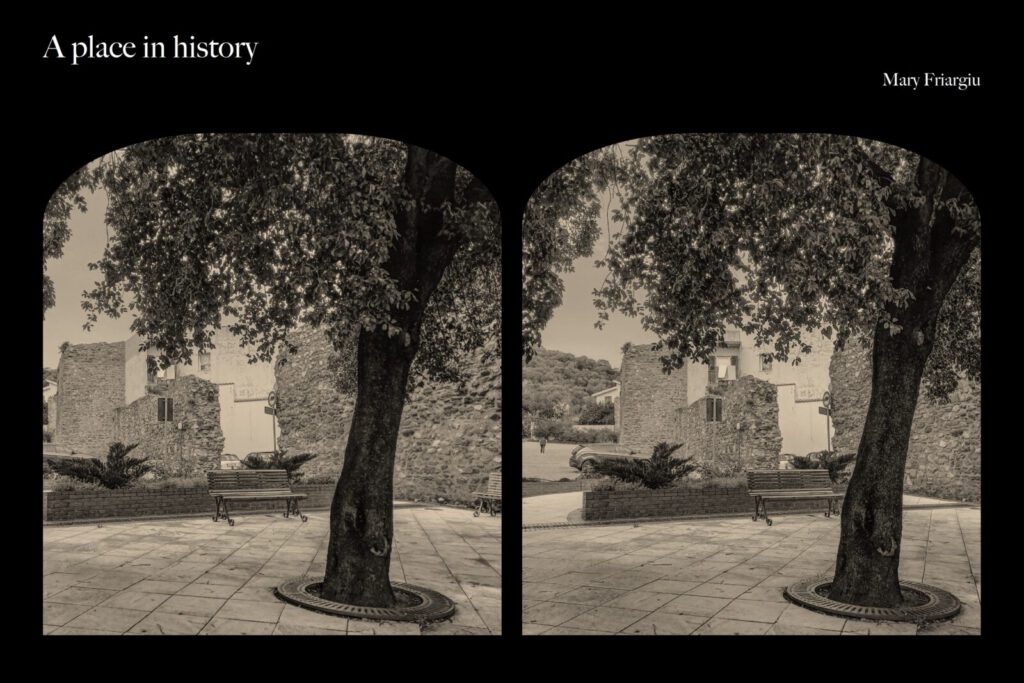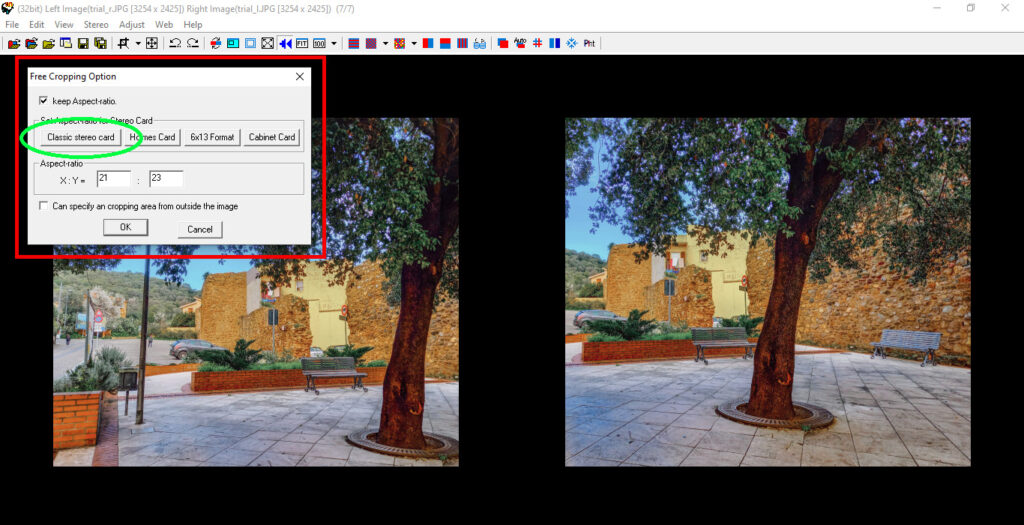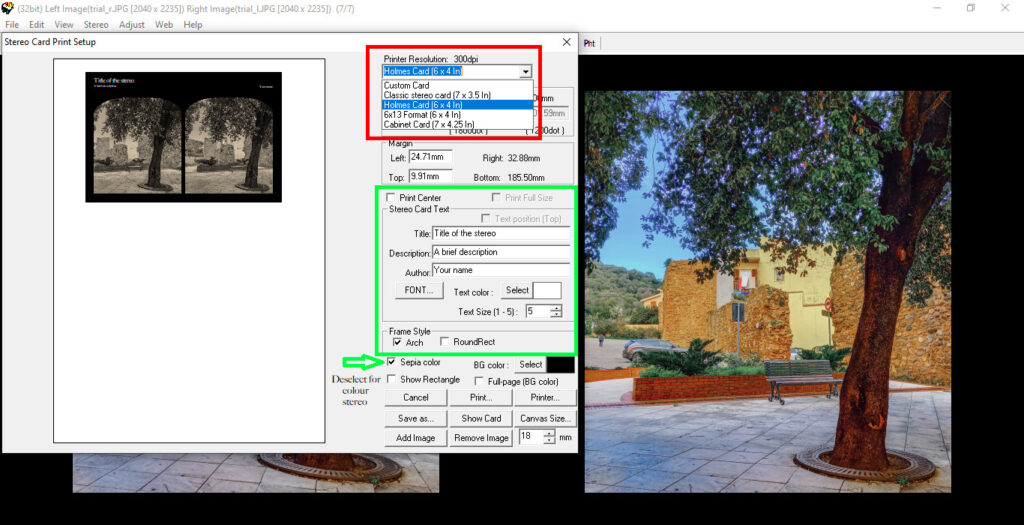Stereo cards from modern times
written for the stereosite by Mary Friargiu, Italy
I present you a series of modern stereo cards, inspired by the Victorian way of depicting reality: Stereoscopic photography. I’ve been inspired and fascinated by the atmosphere of old stereoscopic cards, which were, in their time, the most realistic way to immortalize and then relive the memories driven by the sight of a particular scene. Stereoscopic photos were also considered an effective travel ticket or boarding pass to places around the World during bygone times when travel was not within everyone’s reach. Such stereo ‘postcards’ allowed people to switch off from reality and bring their minds to other places. Stereography made travel more comfortable and affordable for everyone – and as Oliver Wendell Holmes implied, it also “allowed the viewer to own the scene, to place it in a viewer and stand gazing over it”. Another quote that would perfectly reflect the Victorian heyday of stereoscopy comes from William Darrah:
“A steady stream of stereo views depicting the classic antiquities of Rome, Naples, Athens, Egypt and the Holy Land, together with those of cathedrals, public buildings and palaces of the tourists centres Europe provided mementos of the journey and vicarious adventure for those who had to remain at home.”
By the latter half of the 19th century, many towns had their own resident stereoscopic photographer, which means there were plenty of local subjects available for people with stereoscopes, as well as travel cards from far-off lands. I’ve been inspired to create my own virtual travel cards after encountering many stereograms published by the Stereo-Travel Co. (on Google and various stereoscopy blogs); and the Scenes in our Village series by Thomas Richard Williams – a collection of stereo cards in which Williams depicts life in a small English village at the beginning of 1850s. For my series of stereo cards I wandered the paths of such stereocards, with the aim to take you on a virtual walking trip around the streets and old footpaths of my town. I’ve also tried to recreate the unique atmosphere that a vintage card would give to the viewer, from the framing style to the warm sepia tones as in Williams’ works. The result is a collection of gathering places, landmarks, landscapes and secret corners of the Old Town. Here is another example:
I took these stereo photographs with my Smartphone, using the 3DSteroidPro app, which you can easily download to your mobile phone. I use Photoshop Lightroom to enhance colours, light and shadows. I align and crop my stereo pairs with Stereo Photo Maker, which has various built-in tools that make it easy to avoid violating the stereo window. Once aligned and cropped — in a semi-square format — you can find the ‘Print stereo card’ tool (File/Print stereo card). You can choose between different types: Custom stereo card, Classic stereo card, Holmes stereo card, 6x13 Format, and finally the Cabinet card. The characteristic sepia tone is also done with Stereo Photo Maker (Adjust/Colour adjustment/Grey scale/Sepia colour [L/R]). You can also add a title, description, and even the authorship. You can create your own modern stereo card in 10 minutes!
If you want to see the full series of modern Stereocards from Iglesias, visit the corresponding gallery Villa Ecclesiae.
Mary Friargiu (Iglesias, Sardinia, Italy)
I developed my passion for photography during the past couple of years. My interest in stereoscopy, came from the re-establishment of The London Stereoscopic Company and Dr. Brian May’s encouragement to take stereo photographs. I’ve been intrigued by his stereographs, so when I discovered that I could make my own stereo pictures, I was keen to learn everything about stereoscopy. To me, it’s the best way to connect with everything that surrounds me. I use my Smartphone camera (Samsung Galaxy A41) to take stereos; my favourite subjects are landscapes and flowers.
Instagram-profile: maryf.3d





